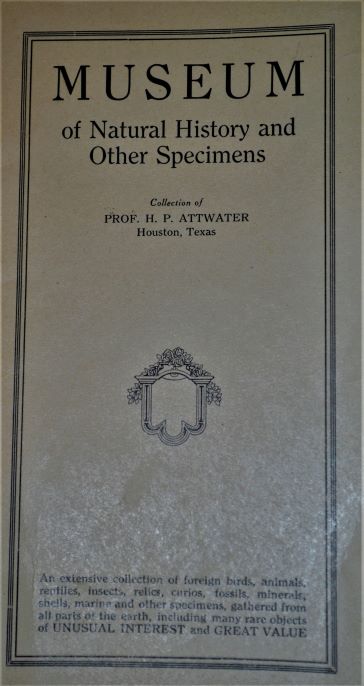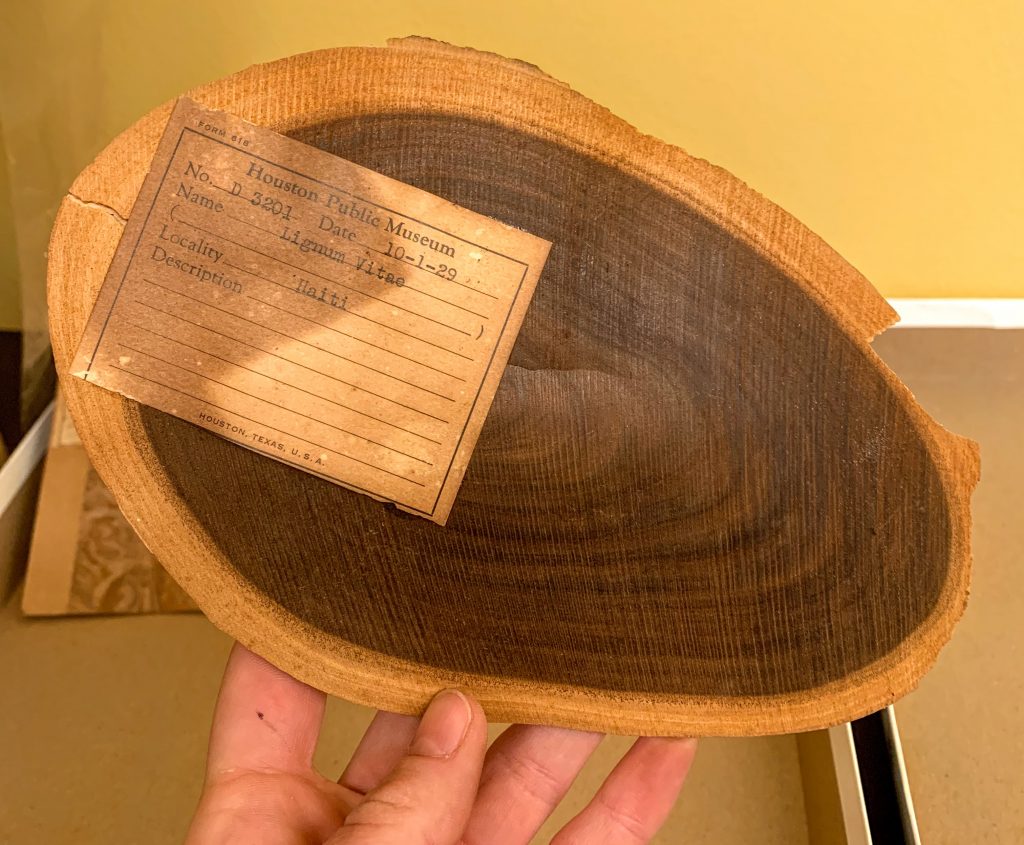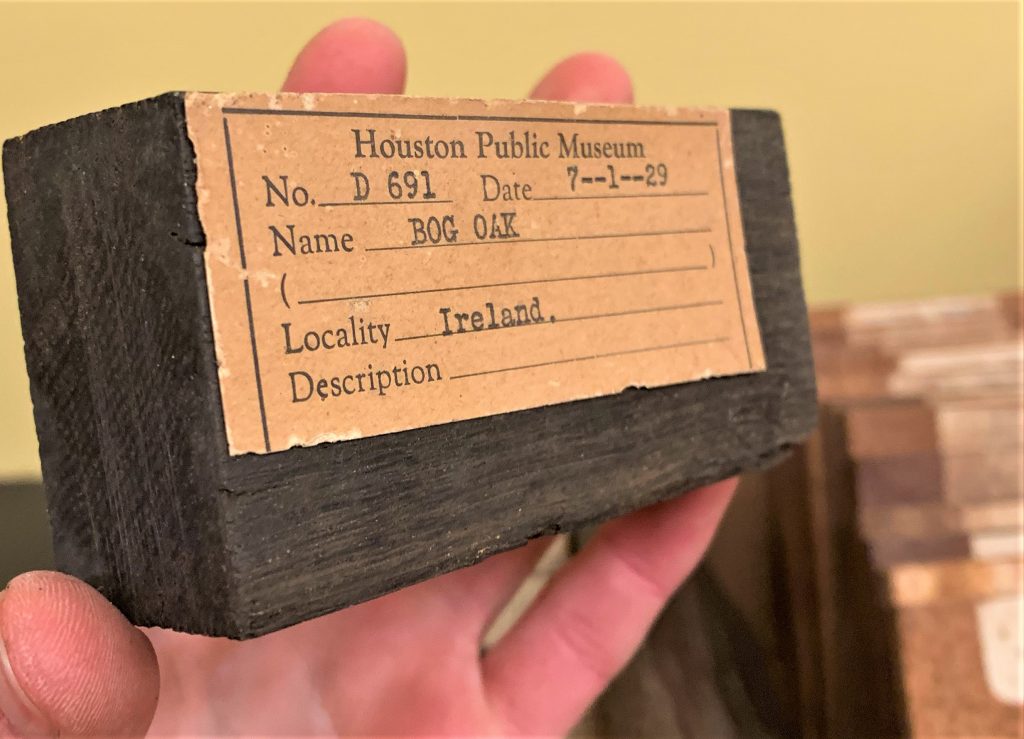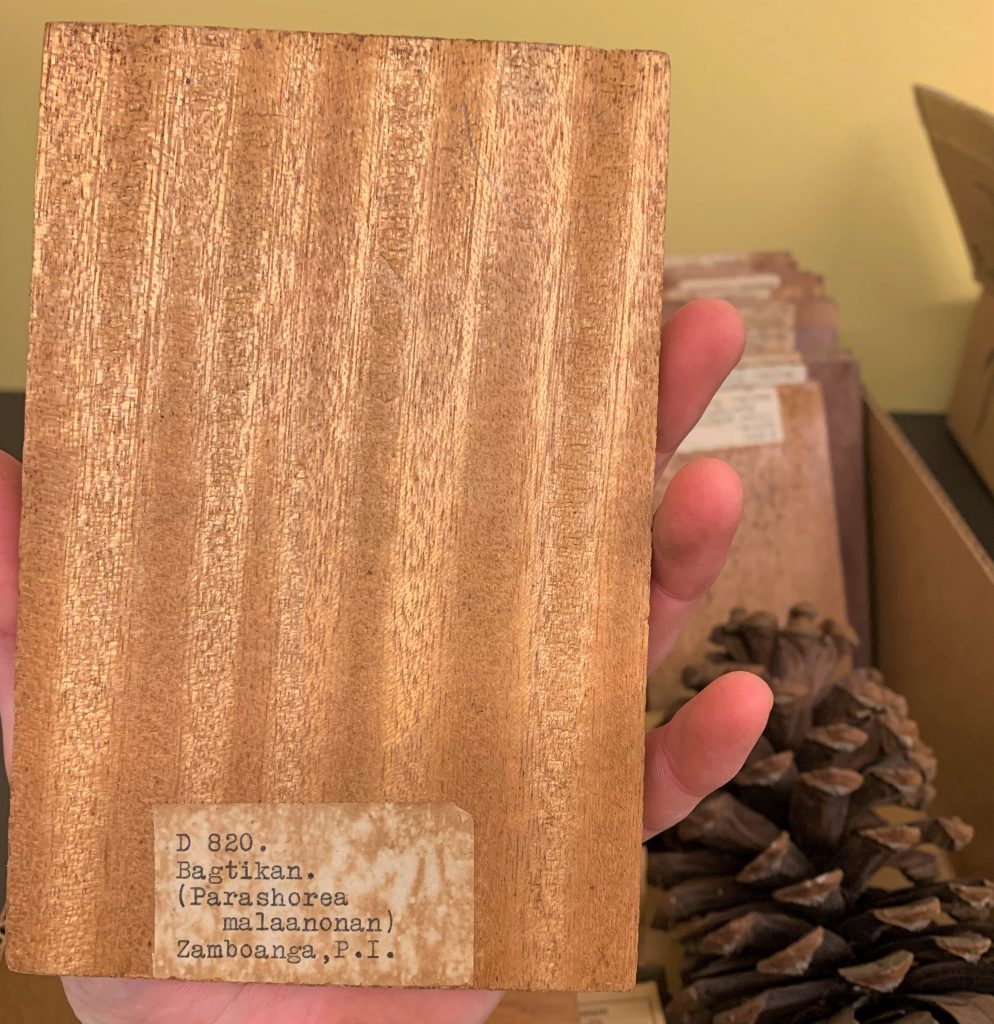A xylarium, xylotheque, and xylothek are all words to describe a collection of wood (the Greek word for “wood” is xylon). In trees, the secondary xylem, the tissue that transports water from the roots to the stems and leaves, and secondary phloem, the food transporter tissue, create tissue patterns unique to each species. Looking back in time, humans have had an intimate relationship with wood – from creating fire, weapons, shelter, medicines, etc. It seems very fitting to have a representative collection of this relationship.
Henry Philemon Attwater, naturalist and collector, prepared natural history collections and “oddities” exhibits for museums and fairs in the early 1900s. The wood collection he created and touted was intended to represent special woods that humans have used specifically for cabinetry as well as interesting natural growths created by trees themselves. Sigmund Westhiemer purchased Attwater’s collection in the 1920s and donated it to the Houston Public Museum (now known as the Houston Museum of Natural Science).

BRIT received the xylarium from the Houston Public Museum in 2001 in addition to 10,000 herbarium specimens and microscope slides. In the summer of 2019, the xylarium was inventoried and has started to make an appearance in student field trips and educational tours. Although a majority of these specimens are not scientific vouchers, there are several samples of species that are now critically endangered in the wild. BRIT is fortunate to have some representation of these species that may not be growing in nature for much longer.



Click here for an inventory of known species in the collection. There are close to one hundred specimens lacking locality and scientific name data that are not listed but are physically accessible in the herbarium.
To see where other Xylaria are located across the world, check out the Global Timber Tracking Network – Index Xylariorum


